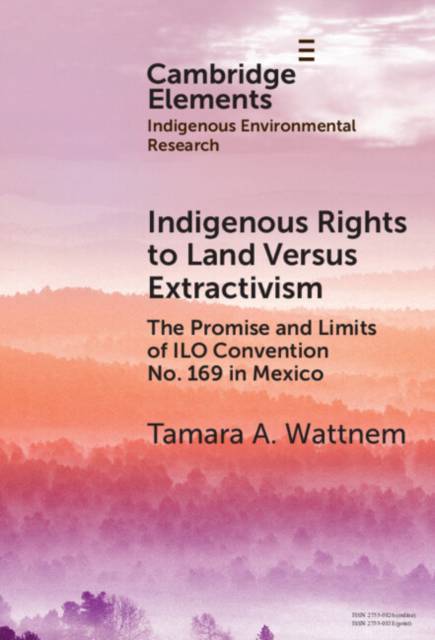
- Afhalen na 1 uur in een winkel met voorraad
- Gratis thuislevering in België vanaf € 30
- Ruim aanbod met 7 miljoen producten
- Afhalen na 1 uur in een winkel met voorraad
- Gratis thuislevering in België vanaf € 30
- Ruim aanbod met 7 miljoen producten
Zoeken
Indigenous Rights to Land Versus Extractivism
The Promise and Limits of ILO Convention No. 169 in Mexico
Tamara A Wattnem
€ 112,95
+ 225 punten
Uitvoering
Omschrijving
Indigenous and tribal communities often make claims to territory citing their longstanding ties to the land. Since 1989, they increasingly reference ILO Convention No. 169, the only legally binding international agreement on Indigenous and tribal peoples rights. This Element proposes a three-pronged analytical framework to assess the promise and limits of indigenous rights to land as influenced by international law. The framework calls for the place-specific investigation of the interrelations between: (1) indigenous identity politics, (2) citizenship regimes, and (3) land tenure regimes. Drawing on the case of Mexico, it argues that the ILO Convention has generally been a weak tool for securing rights to ancestral land and for effectively challenging the expansion of extractivism. Still, it has had numerous other significant socio-political implications, such as shaping discourses of resistance and incentivizing the use of prior consultation mechanisms in the context of territorial disputes.
Specificaties
Betrokkenen
- Auteur(s):
- Uitgeverij:
Inhoud
- Aantal bladzijden:
- 64
- Taal:
- Engels
- Reeks:
Eigenschappen
- Productcode (EAN):
- 9781009590549
- Verschijningsdatum:
- 4/12/2025
- Uitvoering:
- Hardcover
- Formaat:
- Genaaid
- Afmetingen:
- 152 mm x 229 mm
- Gewicht:
- 258 g

Alleen bij Standaard Boekhandel
+ 225 punten op je klantenkaart van Standaard Boekhandel
Beoordelingen
We publiceren alleen reviews die voldoen aan de voorwaarden voor reviews. Bekijk onze voorwaarden voor reviews.








